BRIGHTEST OBJECTS IN SPACE THAT YOU CAN SEE WITH YOUR NAKED EYE
Added on: 8th Dec 2016
CARINA NEBULA

A nebula is an interstellar cloud filled with dust and ionized gases.
The Carina Nebula is especially notable for hosting the
brightest star in the Milky Way Galaxy – WR25. Though it’s
6,300,000 times brighter than our sun, the star doesn’t make
it onto this list due to its distance from Earth – about 7,500
light years. (In contrast, the sun is .000016 light years
away from us.)
SPICA

Though we can see other galaxies and nebulae in the
night sky, such as our own Milky Way Galaxy and the
Orion Nebula, Pleiades, and Andromeda Galaxy, in terms
of apparent magnitude, they’re dimmer than the other
celestial objects on this list. The first star on our list, Spica
is the brightest star in the Virgo constellation. Well,
technically, it’s two stars so close together they look like
an egg-shaped star.
ANTARES
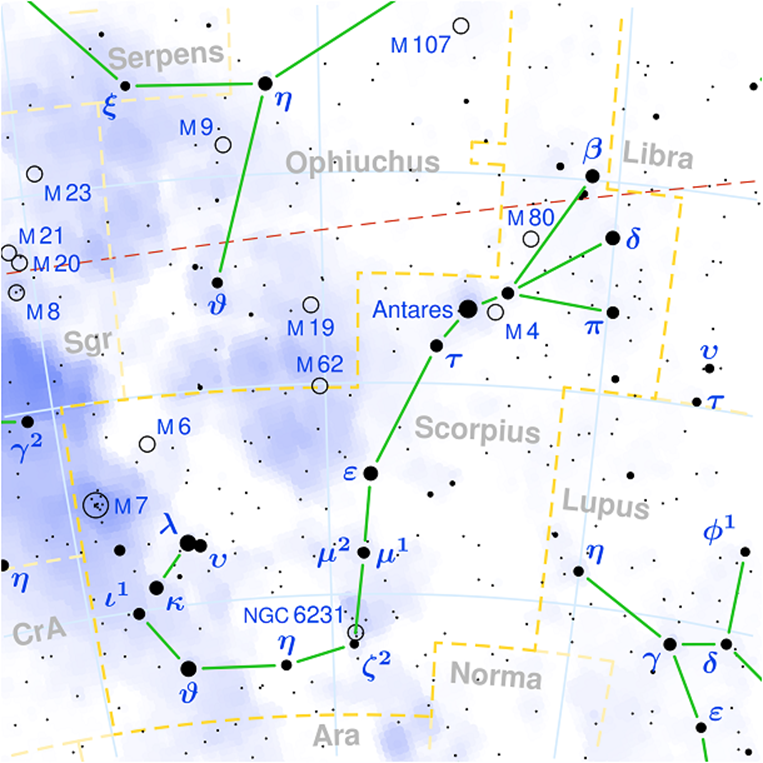
The third furthest star on our list at a distance of 600
light years, Antares is often called the “heart of the scorpion”
as it’s the brightest star in the Scorpius constellation.
Antares is most visible around May 31st when it is completely
opposed to the sun, rising at dusk and setting at dawn.
ALDEBARAN
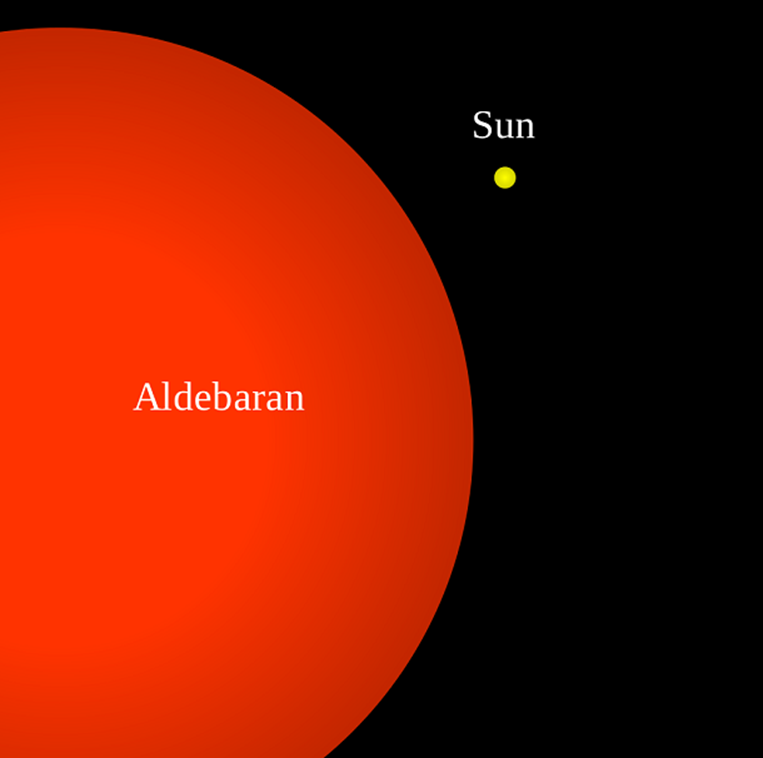
The star Aldebaran (not to be confused with the Star Wars
planet of Princess Leia, Alderaan) is the brightest star in the
Taurus constellation. Its name comes from the Arabic
words for “the Follower”. Aldebaran is remarkably easy to
find in the night sky, just find Orion’s belt and follow the
three stars from left to right (or right to left if you’re in the
Southern Hemisphere) to find the next brightest star.
Humanity will have a closer look at Aldebaran when the
Pioneer 10 probe passes by in two million years.
Yippee. Can’t wait.
ALPHA CRUCIS (ACRUX)

One of the most recognizable figures in the night sky is the
Southern Cross, also known as the constellation Crux.
Its brightest star, Alpha Crucis (Acrux, for short) can be
found on the flags of five countries: Australia, Papua New Guinea,
Samoa, New Zealand, and Brazil. To find it, look for the
“bottom” of the Southern Cross.
ALTAIR
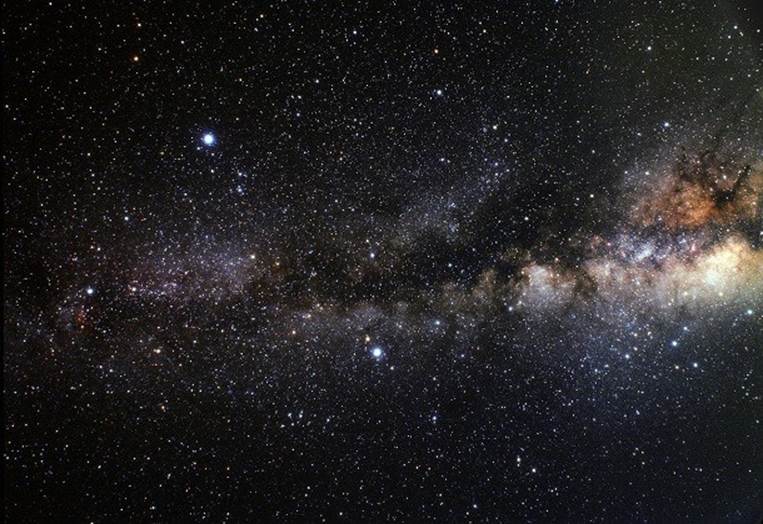
The twelfth brightest star on our list (though 20th brightest
celestial body), Altair is the second most luminous point
of the Summer Triangle to us. It’s also the nearest star in
the Triangle to Earth. (Deneb, the dimmest star to us, is
214 times further away and 7,000 times brighter than Altair
when seen from the same distance away.
BETA CENTAURI (AGENA, HADAR)
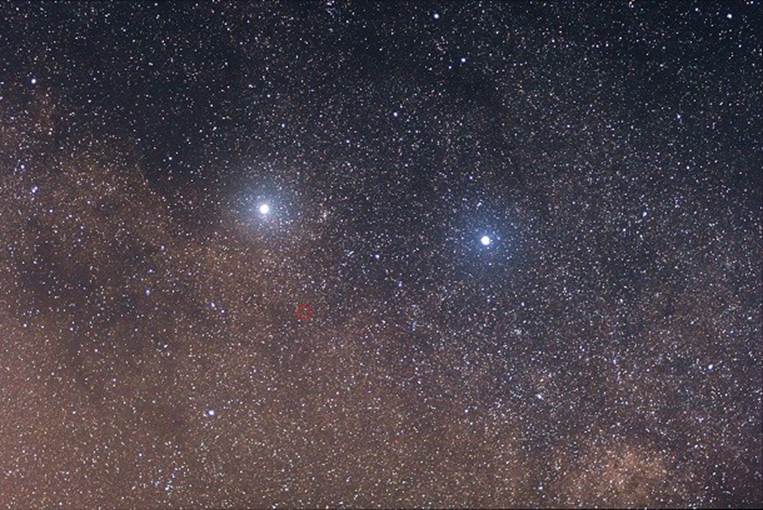
Composed of three stars, the trinary star system of Beta
Centauri has historically been one of the most important
and brightest objects in space. Navigators drew a line
through Alpha Centauri and Beta Centauri, the two ends of
the “Pointers” to the Southern Cross, to determine which
direction was south. The Cross is used the same in the
Southern Hemisphere as Polaris (the North Star) is in the
Northern, as a stable reference point.
BETELGEUSE

Don’t say it three times! The star Betelgeuse is so large that
if it were in the place of our sun, its diameter would extend out
to somewhere between Mars and Jupiter. This massive
supergiant has the most variable visual magnitude and can be
seen nearly everywhere from fall to spring. Look for a bright
red star perpendicular to Orion’s belt.
ACHERNAR
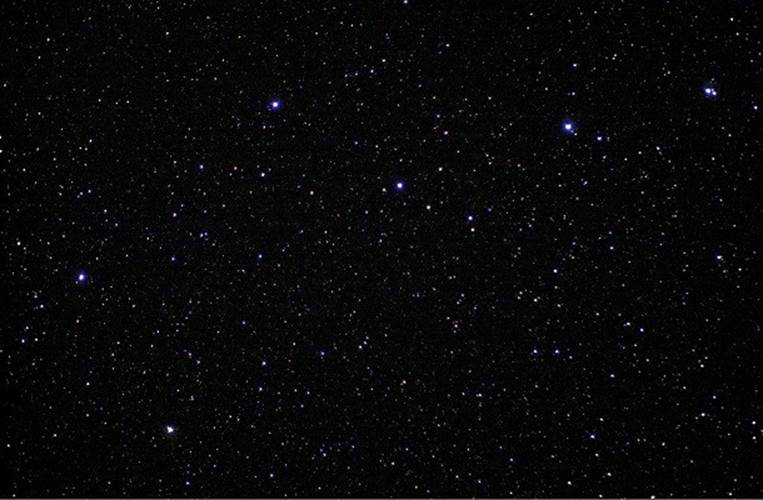
Achernar is the bluest (and hottest) object in space that we can
see with the naked eye. Interestingly, due to its orbital path,
Achernar was not visible to most of our predecessors,
including the Ancient Egyptians. Due to its extremely fast
rotational speed, Archernar is the least spherical shape in
our Milky Way Galaxy.

Comment on this